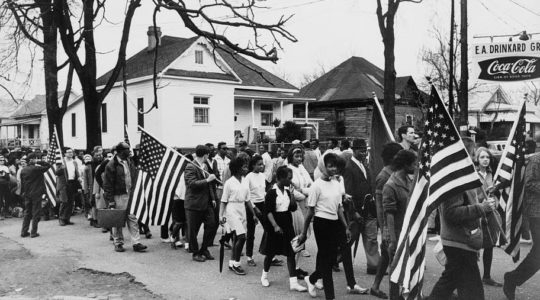Israel and Syria today signed a disengagement agreement laying out in detail the withdrawal of troops and weapons from the front line, creating a buffer zone to be manned by United Nations troops and providing for the exchange of POWs and the search for bodies.
The agreement was signed here at the UN’s European headquarters at 10:05 GMT by the Israeli delegate. Maj. Gen. Herzl Shafir, Syria’s Maj. Gen. Adnan Tayara and the commander of the United Nations Emergency Force (UNEF), Lt. Gen. Ensio Sillasvuo. America’s Ellsworth Bunker and Russia’s Vladimir Vinogradov attended the meeting in their capacities of co-chairmen of the Geneva peace conference.
It is believed that the agreement provides for a three-phase Israeli withdrawal which will culminate in a retreat from the town of Kuneitra, occupied in 1967. UN troops, supplied by Austria, Poland and Canada, will take up posts in the buffer zone shortly before Israel’s withdrawal.
Today’s ceremony was half private. The Syrian delegation requested that newsmen and cameras be barred from the actual signing ceremony Addressing the delegations. Gen. Siilasvuo stressed that both sides, Israel and Syria, had done their best to find “areas of accommodation” and solutions of compromise. The UNEF chief expressed the belief that the disengagement process, due to start tomorrow, will “be completed without difficulties.”
STARTS TODAY
According to the agreement the disengagement process is to begin 24 hours after the signing. It is believed that the first step will be the exchange of remaining POWs. Wounded POWs were exchanged last Saturday. The Red Cross has two planes stationed in the Middle East for the purpose, a small Fokker in Damascus and a larger Douglas in Tel Aviv. Red Cross officials say that they might send a third plane to the Middle East to speed up the exchange.
The negotiations started last Friday when the two delegations signed the basic disengagement agreement as drawn up by U.S. Secretary of State Henry A. Kissinger. They started negotiations on its implementation the following day and completed them with relative ease within three days, instead of the five provided by the basic agreement. On Monday afternoon a military subcommittee drew up the actual withdrawal maps. The five delegations present at today’s ceremony the UN. U.S., Soviet Union, Israel and Syria were seen carrying with them copies of the disengagement maps.
At the end of the official meeting, the Americans and the Soviets walked over to the two delegations to shake hands with them. Ambassador Vinogradov’s handshake with Gen. Shafir seemed rather cursory but Ambassador Bunker spent some time chatting with the Syrians. The second man in the American delegation, Alfred Atherton, was seen engaged in conversation with the Syrians. Atherton’s name is frequently mentioned as the possible U.S. Ambassador to Damascus once Syria and the U.S. resume diplomatic relations.
The Syrians and the Israelis did not shake hands. It appeared that the two delegations pointedly avoided looking at each other. Throughout the meeting both sides followed the same system, addressing their remarks to the UN chairman and avoiding any direct contact. There were no greetings or salutes. In spite of this “coldness” UN officials here are optimistic saying that today’s agreement which for the first time ends all open warfare, may open the way to an actual peace negotiation. It is believed that the groundwork for this will be laid by President Nixon during his forthcoming trip to the Middle East and at his meeting with Soviet Communist Party Secretary Leonid Brezhnev.
JTA has documented Jewish history in real-time for over a century. Keep our journalism strong by joining us in supporting independent, award-winning reporting.
The Archive of the Jewish Telegraphic Agency includes articles published from 1923 to 2008. Archive stories reflect the journalistic standards and practices of the time they were published.



